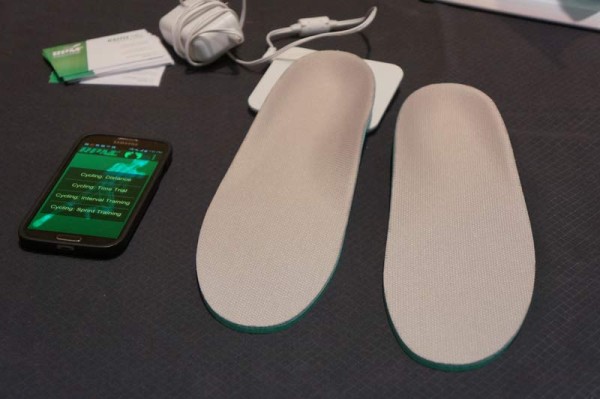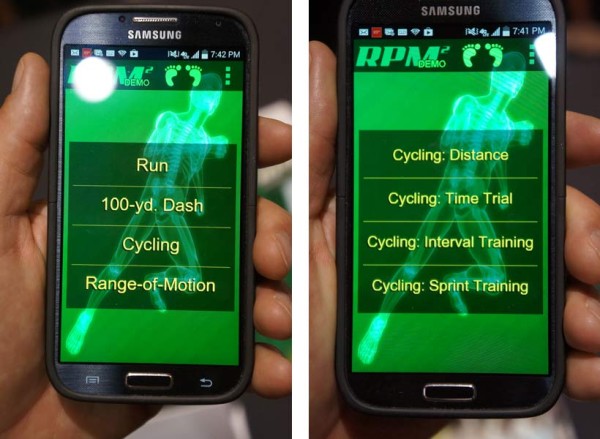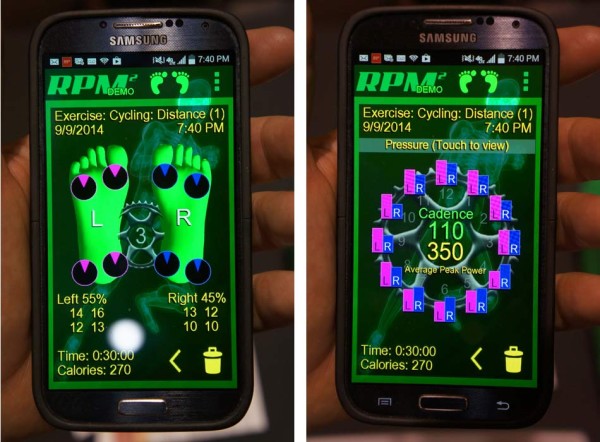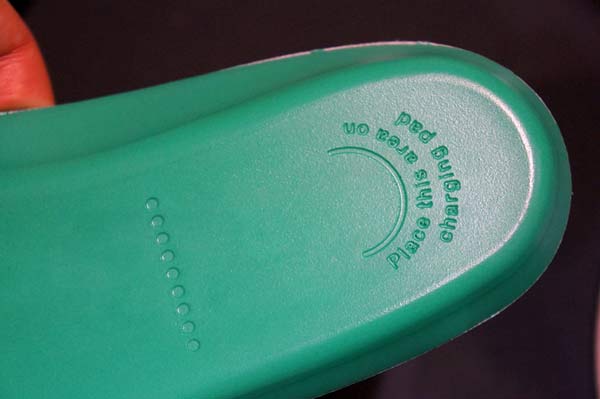While PowerTap may have experimented with insole-based power meters, RPM2 put their foot down and stepped into production.
They make versions for both cycling and running as well as a combo unit for triathlon/multisport use, and the cycling features make it fairly unique among power meter options. Garmin’s recent software update for its Vector pedals added a simple foot pressure balance measurement, showing if you were putting more pressure on the inside or outside edges of the pedal. Presumably, this data let you know if you’re feet could be better centered over the pedal for more efficient power transfer.
RPM2 takes this a step further (or closer?) by measuring both left/right and fore/after pressure, letting you see exactly where your feet are pressing the hardest against your shoe’s sole. This provides more specific and exact data that can be used to correct cleat placement, fit and alignment.
Of course, it also provides standard total power output for each leg, along with cadence and where in your pedal stroke your power is being applied…
Depending on the type of workout you’re going to do, the RPM2 app (iOS, Android) has specific tests available to measure things like pedal stroke efficiency and power pressure over time. The latter shows how your form breaks down over time, which can show help illuminate things like muscle imbalances, poor form and alignment issues that could lead to decreased performance or overuse injuries.
It captures and displays power, peak power, cadence, pronation, supination and bilateral equivalence (aka separate left versus right leg power output). They recommend weekly tests to gauge improvement, and that you use your standard insoles during regular training, putting the RPM2 insoles in mainly for testing purposes.
For runners, it measures gait along with impact forces and position, helping you determine if you’re striking in the heel, mid or fore foot. It also shows pronation and supination, how hard you’re landing and how your form changes over the course of a run. Olympian Michael Johnson has just signed on to endorse them and help with development.
The insoles top off their batteries using the included inductive charging pad, just rest them on top of it. Running and cycling versions are sold separately for $599 and $619 respectively, or get the combo triathlon model for $649. They come in six different sizes from women’s 3US to men’s 15US, each one accommodating a 1.5 to 2 shoe size range by trimming them down within the guidelines.



